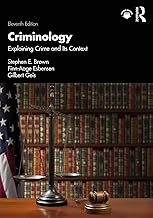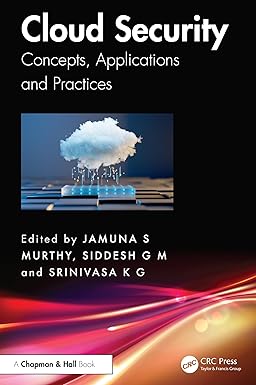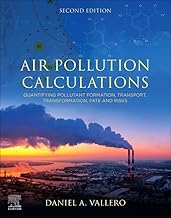
Book
Quantum Mechanics
ISBN : 9781119829874
Author : Mark Julian Everitt
Publisher : wiley
Year : 2023
Language : English
Type : Book
Description : Table of Contents Acronyms xiii About the Authors xv Preface xvii Acknowledgements xix About the Companion Website xxi Introduction xxiii 1 Mathematical Preliminaries 1 1.1 Introduction 1 1.2 Generalising Vectors 2 1.2.1 Vector Spaces 2 1.2.2 Inner Product 5 1.2.3 Dirac Notation 7 1.2.4 Basis and Dimension 9 1.3 Linear Operators 10 1.3.1 Definition and Some Key Properties of Linear Operators 10 1.3.2 Expectation Value of Random Variables 12 1.3.3 Inverse of Operators 13 1.3.4 Hermitian Adjoint Operators 13 1.3.5 Unitary Operators 15 1.3.6 Commutators 15 1.3.7 Eigenvectors and Eigenvalues 17 1.3.8 Eigenvectors of Commuting Operators 18 1.3.9 Functions of Operators 18 1.3.10 Differentiation of Operators 19 1.3.11 Baker Campbell Hausdorff, Zassenhaus Formulae, and Hadamard Lemma 19 1.3.12 Operators and Basis State – Resolutions of Identity 20 1.3.12.1 Outer Product and Projection 20 1.3.12.2 Resolutions of Identity 21 1.4 Representing Kets as Vectors, and Operators as Matrices and Traces 22 1.4.1 Trace 24 1.4.2 Basis, Representation, and Inner Products 24 1.4.3 Observables 25 1.4.4 Labelling Vectors – Complete Sets of Commuting Observables – CSCO 25 1.5 Tensor Product 26 1.5.1 Setting the Scene: The Cartesian Product 26 1.5.2 The Tensor Product 27 1.6 The Heisenberg Uncertainty Relation 29 1.7 Concluding Remarks 32 2 Notes on Classical Mechanics 35 2.1 Introduction 35 2.2 A Brief Revision of Classical Mechanics 38 2.2.1 Lagrangian Mechanics 38 2.2.2 Hamiltonian Mechanics 41 2.3 On Probability in Classical Mechanics 45 2.3.1 The Liouville Equation 45 2.3.2 Expectation Values 48 2.4 Damping 50 2.5 Koopman–von Neumann (KvN) Classical Mechanics 53 2.6 Some Big Problems with Classical Physics 56 2.6.1 Atoms and Polarisers 56 2.6.2 The Stern–Gerlach Experiment 56 2.6.3 The Correspondence Principle – What It Is and What It Is Not 59 3 The Schrödinger View/Picture 63 3.1 Introduction 63 3.2 Motivating the Schrödinger Equation 64 3.2.1 Ehrenfest’s Theorem, Poisson Brackets, and Commutation Relations 68 3.2.2 The Main Proposition 70 3.2.2.1 Summarising an Issue with the Above Argument 70 3.3 Measurement 71 3.3.1 Introducing Measurement 71 3.3.2 On the Possible Connection Between the State Vector and Probabilities 73 3.3.3 The Time-independent Schrödinger Equation 75 3.3.4 Measurement Outcomes 77 3.4 Representation of Quantum Systems 78 3.4.1 The Position and Momentum Representation 78 3.4.1.1 The One-dimensional Case 78 3.4.1.2 Three Dimensions 83 3.4.2 Spin 85 3.4.3 Spin and Position – The Spinor 88 3.5 Closing Remarks and the Axioms of Quantum Mechanics 89 4 Other Formulations of Quantum Mechanics 93 4.1 Introduction 93 4.2 The Heisenberg Picture 94 4.2.1 Background 94 4.2.2 Motivating the Heisenberg Equation of Motion 95 4.2.3 A Specific Example: the One-dimensional Harmonic Oscillator 100 4.2.4 The State, Representation, and Dynamics 101 4.2.5 Axioms of Quantum Mechanics Revisited 101 4.2.6 The Evolution Operator 102 4.2.7 Connection to the Schrödinger Picture, and Revisiting Issues with Ehrenfest’s Theorem 105 4.3 Wigner’s Phase-space Quantum Mechanics 106 4.3.1 Background 106 4.3.2 Motivating the Phase-space Equation of Motion 107 4.3.3 Quantising Phase Space 108 4.3.4 Joining the Dots 113 4.3.5 The Heisenberg Uncertainty Relation 117 4.3.6 Generalising Wigner Functions to Spins 118 4.3.7 Axioms of Quantum Mechanics Revisited 121 4.4 The Path Integral Formulation of Quantum Mechanics 122 4.5 Closing Remarks 124 5 Vectors and Angular Momentum 127 5.1 Introduction 127 5.2 On Curvilinear Coordinates (Using Spherical Coordinates as an Example) 129 5.2.1 The Coordinate Representation: A Statement of the Problem 129 5.2.2 Canonical Quantisation in Spherical Coordinates 131 5.2.3 Spherical Coordinates, Vectors, and Momenta 132 5.3 The Theory of Orbital and General Angular Momentum 137 5.3.1 From Classical to Quantum Angular Momentum 137 5.3.2 General Properties of Angular Momentum 139 5.3.3 Eigenvalues and Eigenvectors of Angular Momentum 141 5.3.4 Worked Examples of Matrix Construction 143 5.3.5 Orbital Angular Momentum Basis 145 5.4 Addition of Angular Momentum 147 5.4.1 The General Theory 147 5.4.2 Two-particle Systems 148 5.4.3 Example: Addition of Spins 150 6 Some Analytic and Semi-analytic Methods 153 6.1 Introduction 153 6.2 Problems of the Form Ĥ0 + Ŵ 154 6.2.1 The Interaction Picture 154 6.2.2 Time-independent Perturbation Theory 155 6.2.3 Time-dependent Perturbation Theory 159 6.3 The Variational Method 161 6.4 Instantaneous Energy Eigenbasis 161 6.5 Moving Basis 163 6.6 Time periodic Systems and Floquet Theory 164 6.7 Two-level Systems 168 6.7.1 Non-degenerate Uncoupled System 170 6.7.2 Non-degenerate Coupled System 170 6.7.3 Degenerate Coupled System 172 7 Applications and Examples 175 7.1 Introduction 175 7.2 Position Representation Examples of Particles and Potentials 176 7.2.1 The Free Particle 176 7.2.2 Infinitely Deep Potential Well 177 7.2.3 The Finite Potential Barrier 180 7.2.4 Finite Potential Well 183 7.3 The Harmonic Oscillator 186 7.3.1 A Scheme for Creating Ladder Operators 186 7.3.2 Ladder Operators and Some Eigenvalue Properties of the QHO 186 7.3.3 A Walk-through of Repeatedly Applying â † to |0⟩ 188 7.3.4 The General Form of the Action of â and â † on |n⟩ 190 7.3.5 Matrix Representation 192 7.3.6 The Position Representation of Wave-functions 193 7.3.7 Coherent States 197 7.3.7.1 Introduction 197 7.3.7.2 Coherent States in the Number Basis 200 7.3.7.3 Coherent States as Displaced Vacuum States 201 7.3.7.4 The Position Representation 202 7.4 The Hydrogen Atom 203 7.4.1 Introduction 203 7.4.2 Quantum Analysis 206 7.4.2.1 Choosing a Representation 206 7.4.3 Fine Structure of Hydrogen: Spin–Orbit Coupling 211 7.5 The Dihydrogen Ion 212 7.6 The Jaynes–Cummings Model 215 7.6.1 The Hamiltonian 215 7.6.2 The Eigenstates and Eigenvalues 217 7.6.3 Dynamics of the Atomic Inversion 218 7.7 The Stern–Gerlach Experiment 222 8 Computational Simulation of Quantum Systems 227 8.1 Introduction 227 8.2 General Points for Consideration 229 8.2.1 On Code Clarity and Performance 229 8.2.1.1 On Comments 230 8.2.1.2 Clear Code 232 8.2.2 Should I Use Third-party Libraries? 232 8.2.3 Choice of Language 233 8.3 Some Overarching Coding Principles 236 8.3.1 Have Clear Objectives 236 8.3.2 Trust Your Code 236 8.3.3 Plan for the Future 237 8.3.4 Test, Test, Test 238 8.3.5 Object-oriented Design 240 8.3.6 Be a SOLID Scientific Programmer 242 8.3.6.1 The Single-responsibility Principle 242 8.3.6.2 The Open-closed Principle 242 8.3.6.3 The Liskov Substitution Principle 243 8.3.6.4 The Interface Segregation Principle 243 8.3.6.5 The Dependency Inversion Principle 244 8.3.7 Be a Clean Coder 244 8.3.8 Continue to Master Your Craft 245 8.4 A Small Generic Quantum Library 245 8.4.1 Some Swift Basics 246 8.4.1.1 Comments 246 8.4.1.2 Primitive Types and Their Declaration 246 8.4.2 Complex Numbers and the ‘Generic’ Decision 247 8.4.2.1 Introducing Structure and Classes 247 8.4.2.2 A First Look at Generics 249 8.4.2.3 Functions 249 8.4.2.4 Operator Overloading 250 8.4.2.5 Introducing Protocols and Extensions 250 8.4.2.6 An Aside on the Power of Extensions 253 8.4.3 Adding Quantum Structure to the Code 254 8.4.3.1 Spaces 255 8.4.3.2 Vectors 256 8.4.3.3 Operators 260 8.4.4 Quantum Functionality 261 8.4.5 Dynamics 268 8.4.6 Plotting the Output 275 8.5 Concluding Remarks 275 8.6 Appendix I – Some Useful Calculated Quantities 277 8.6.1 Exponentials of the Annihilation and Creation Operators 277 8.6.2 The Pauli Vector: Euler Formula and Other Functions 278 8.6.3 Cosine of the Position Operator 279 8.7 Appendix II – Wigner Function Code 280 9 Open Quantum Systems 281 9.1 Introduction 281 9.1.1 Context 281 9.1.2 Background 281 9.1.3 System Plus Bath Models 283 9.2 Classical Brownian Motion 284 9.2.1 Brownian Motion from Hamiltonian Mechanics 286 9.3 Master Equations 288 9.3.1 The Redfield Master Equations 290 9.3.2 The Caldeira–Leggett Model 294 9.3.2.1 Spectral Density 298 9.3.3 Master Equations of Lindblad Form 301 9.3.4 Low-temperature Regime 306 9.3.5 Lindblads: Strengths and Weaknesses 308 9.3.6 Effective Hamiltonians 309 9.4 Master Equation Approximations and Their Implications 311 9.4.1 The Baker Campbell Hausdorff Approximations 311 9.4.2 The Born Approximation 312 9.4.3 Choice of Spectral Density 313 9.4.4 High Cut-off Limit 315 9.5 A Master Equation Derivation Example 316 9.5.1 Inductive Coupling 318 9.5.2 Introducing Capacitive Coupling 322 9.5.3 Where Does the Model Break Down? 325 9.6 Unravelling the Master Equation 326 10 Foundations: Measurement and the Quantum-to-Classical Transition 331 10.1 Introduction 331 10.2 The Measurement Problem 333 10.3 Refining the Idea of Measurement 336 10.4 My First Foray into Model-based Measurement 339 10.5 Two Other Measurement Devices and Their Classical Limit 344 10.6 The Quantum-to-Classical Transition 348 10.7 A Model-based Approach to Quantum Measurement 354 10.8 Questions for the Reader to Ponder 358 11 Quantum Systems Engineering 361 11.1 Introduction 361 11.2 What Is Systems Engineering? 363 11.2.1 An Overview 363 11.2.2 Notes on Complexity and Interconnectedness 365 11.2.3 Industry Standard Systems Engineering 365 11.3 Quantum Systems Engineering 366 11.3.1 Motivation 366 11.3.2 Modelling and Simulation Challenges 368 11.3.2.1 What Is in a Model? 368 11.3.2.2 Design for Modelability 369 11.3.2.3 Hierarchical Modelling 369 11.3.2.4 An Aside on Standards 370 11.3.2.5 Extensibility 370 11.3.2.6 State of Play 371 11.3.3 Reliability Engineering 371 11.3.4 System-of-interest Boundaries 373 11.3.5 Requirements Analysis 376 11.3.6 Test and Verification 379 11.3.7 Device Characterisation 382 11.3.8 Model-based Systems Engineering 383 11.4 Concluding Remarks 386 Bibliography 387 Index 395








